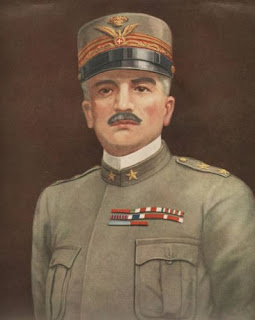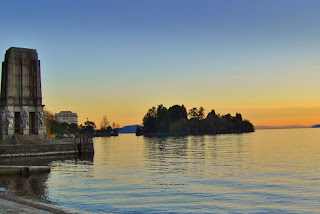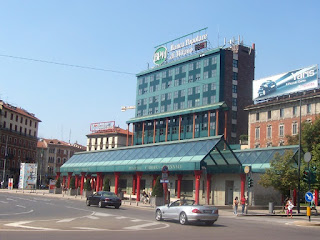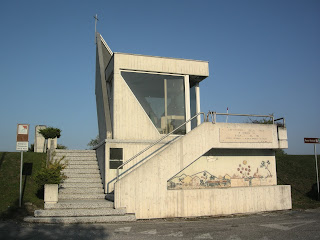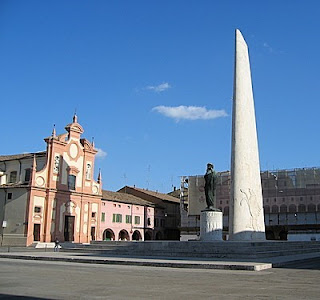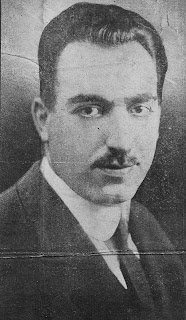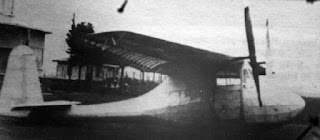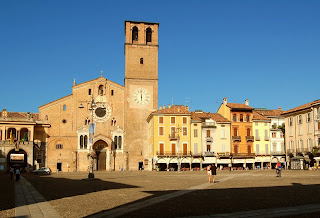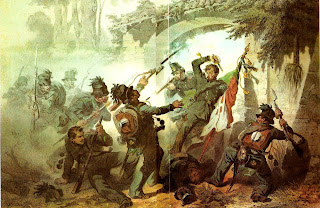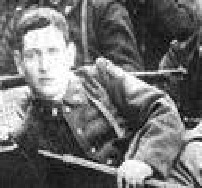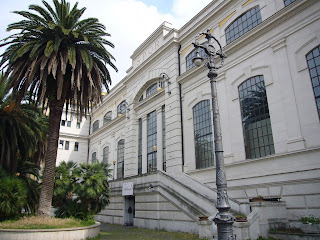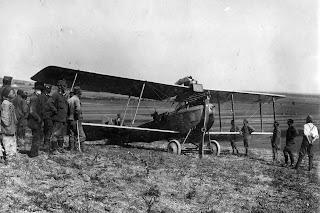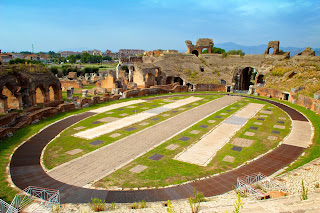Brave nun was prepared to die caring for others
 |
| A depiction of Maria Bertilla Boscardin from Catholic Church literature |
She was beatified by Pope Pius XII in 1952, just 30 years
after she died, and made a saint by Pope John XXIII nine years later.
It was one of the quicker canonisations of modern history. Sometimes
many decades or even hundreds of years pass before a person’s life is recognised
with sainthood.
Boscardin’s came so swiftly that relatives and some of the
patients she cared for were present at her canonisation ceremony. Indeed, her
father, Angelo, was asked to provide testimony during the beatification process.
Born into a peasant family, who knew her as Annette, her
life in Brendola, which is about 15km (9 miles) southwest of Vicenza, was
tough. She was seen as rather a
slow-witted child, mocked by her peers and unkindly nicknamed ‘the goose’ even
by the local priest. Her father, a drunkard, was often abusive and violent.
She wanted to become educated but her attendance at school
was at times only sporadic because her family required her to work.
Her ambition to become a nun was in part to escape from this
unhappy childhood. She was turned down
by the first order to which she applied but the Sisters of St Dorothy in
Vicenza admitted her to their convent, assigning her the religious name Maria Bertilla.
 |
| After a tough upbringing, Maria found her calling as a carer for sick children |
She found her calling after being assigned to work with the
children being treated at the hospital, many of whom were suffering from
diptheria, and needed constant attention.
One of the doctors at Treviso later testified that many of
the children, separated from their families for the first time, arrived at the
hospital so agitated that they would cry constantly for several days.
But Sister Bertilla, he recalled, “succeeded in rapidly
becoming a mother to them all. After two or three hours the child, who was
desperate, clung to her, calmly, as to his mother and followed her wherever she
went.”
When the First World War spread to Italy in 1915, Bertilla vowed
she would make the ultimate sacrifice, if necessary, to care for the
wounded. An entry in her diary read: ‘Here
I am, Lord, to do according to your will, under whatever aspect it presents
itself, let it be life, death or terror.'
As Treviso came under attack following the defeat of the
Italian army at the Battle of Caporetto, she is said to have stayed with patients
who could not be moved, praying and providing marsala wine for those who needed
it.
After the war, she was sent to a sanatorium to care for
soldiers with tuberculosis. Next she was sent to a seminary to care for survivors
of an epidemic.
 |
| The statue of Maria Bertilla Boscardin at the church of Saints Peter and Paul in Cagnano |
The cancer had recurred. The only hope of a cure was to have
another operation. But she was much weaker this time and died in October, 1922,
two weeks after her 34th birthday.
Having suffered so much cruelty as a young girl and left
home with little sense of self-worth, Maria Bertilla ultimately left a deep
impression on those who knew her.
She was initially buried in Treviso but after crowds
regularly gathered at her grave, it was decided to erect a tomb for her in
Vicenza. A memorial plaque placed on her tomb described her as "a chosen
soul of heroic goodness ... an angelic alleviator of human suffering in this
place."
The tomb became a pilgrimage site where several miracles of
healing were said to have taken place.
A number of churches in the area around Vicenza have been dedicated to Saint Maria Bertilla Boscardin, including one at Via Antonio Federico Ozanam in the west of the city and another in the village of Cagnano, about 40km (25 miles) south of Vicenza, which has a statute of her.
A number of churches in the area around Vicenza have been dedicated to Saint Maria Bertilla Boscardin, including one at Via Antonio Federico Ozanam in the west of the city and another in the village of Cagnano, about 40km (25 miles) south of Vicenza, which has a statute of her.
Travel tip:
The house of the Sister Teachers of Santa Dorothea, where
Maria Bertilla Boscardin took vows, is located in Contrà San Domenico in
Vicenza. It contains a chapel dedicated to her which was built in 1952, in view
of her beatification. In the same year the urn containing the remains of the
saint, originally buried in Treviso, were placed under the altar table. In 2002 thanks to architect Paolo Portoghesi
the altar - previously in burnished copper - was replaced with one in white
marble and the urn containing the remains of the saint was placed in front of
it.
For many visitors to Italy, Treviso is no more than the name
of the airport at which they might land en route to Venice, yet it is an attractive
city worth visiting in its own right, rebuilt and faithfully restored after the
damage suffered in two world wars. Canals are a feature of the urban landscape –
not on the scale of Venice but significant nonetheless – and the Sile river
blesses the city with another stretch of attractive waterway, lined with
weeping willows. The arcaded streets have an air of refinement and prosperity
and there are plenty of restaurants, as well as bars serving prosecco from a
number of vineyards. The prime growing area for prosecco grapes in
Valdobbiadene is only 40km (25 miles) away to the northeast.



